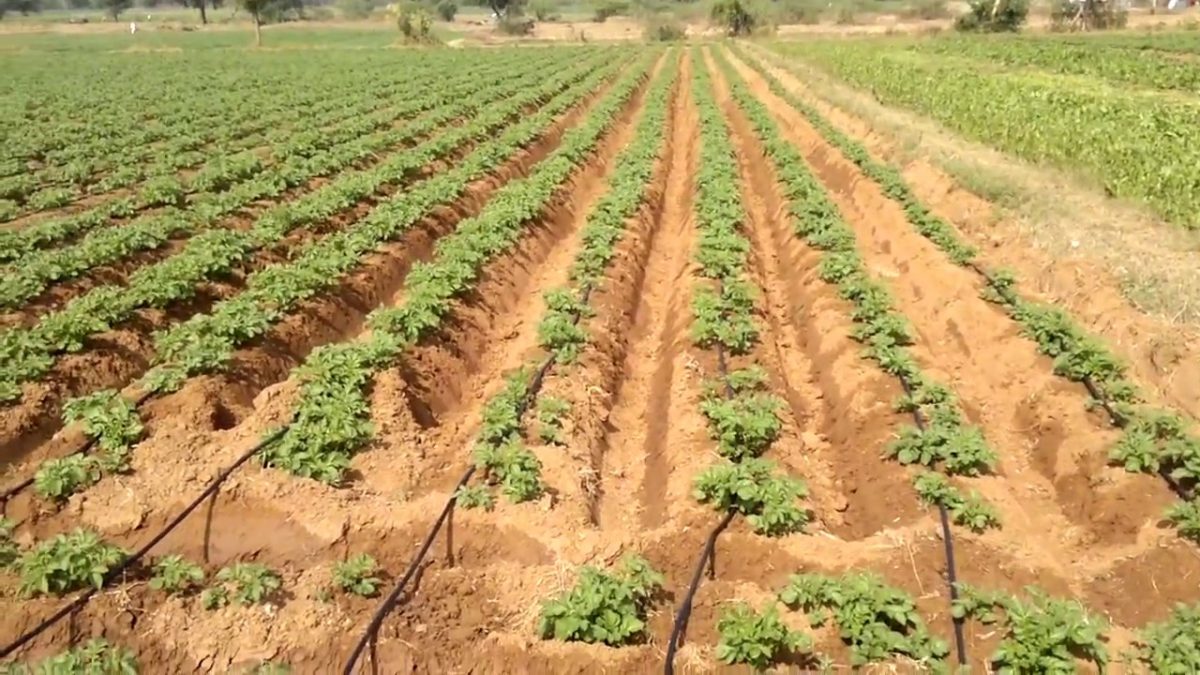In recent years, precision farming has revolutionized the way farmers cultivate their crops. One of the most promising technologies in precision farming is the use of sensors. By using sensors, farmers can monitor different parameters of their crops in real-time and make more informed decisions. In this context, the use of sensors for drip irrigation management in potato farming is becoming increasingly popular.
Drip irrigation is a water-efficient technique where water is delivered directly to the root zone of plants. This technique is particularly suitable for potato farming because potatoes have a shallow root system, and the soil needs to be kept moist but not wet. However, the success of drip irrigation largely depends on the ability to apply the right amount of water at the right time. This is where sensors come into play.
Sensors can measure different parameters of the soil and the crop, such as soil moisture, temperature, and plant growth. With this information, farmers can optimize the amount and timing of water delivery to the plants. For example, sensors can detect when the soil is getting dry and activate the irrigation system automatically. This prevents water stress in the plants and ensures optimal growth and yield.
In potato farming, sensors can also be used to monitor the nutrient levels in the soil. Potatoes require specific nutrients, such as potassium and phosphorus, to grow properly. By using sensors to measure the nutrient levels in the soil, farmers can adjust the fertilizer application to meet the crop’s needs. This not only ensures optimal growth and yield but also reduces the risk of nutrient leaching and pollution.
Another benefit of using sensors for drip irrigation management in potato farming is the reduction of water waste. Traditional irrigation methods, such as overhead sprinklers, can result in significant water loss due to evaporation and runoff. Drip irrigation, on the other hand, delivers water directly to the root zone, reducing water loss and increasing water use efficiency. By combining drip irrigation with sensors, farmers can further reduce water waste by applying water only when and where it is needed.
The use of sensors for drip irrigation management in potato farming is not only beneficial for the farmers but also for the environment. Water scarcity is a global challenge, and agriculture is one of the main water users. By using water more efficiently, farmers can contribute to the conservation of this precious resource. Moreover, the reduction of water waste also reduces the risk of soil erosion and pollution.
In conclusion, the use of sensors for drip irrigation management in potato farming is a promising technology that can benefit farmers, the environment, and society as a whole. By providing real-time information about soil and crop conditions, sensors allow farmers to make more informed decisions about water and nutrient management. This, in turn, leads to optimal growth and yield, reduced water waste, and environmental sustainability. As precision farming technologies continue to evolve, the use of sensors is likely to become even more widespread and essential for the future of agriculture.
The Dutch agriculture magazine Boerderij recently published an article on how to use sensors to optimize drip irrigation in potatoes. Drip irrigation is a method of applying water directly to the root zone of the plants through a network of pipes and emitters, which can reduce water waste and improve water-use efficiency compared to other irrigation methods like sprinklers or furrows. However, drip irrigation requires precise control of water delivery, as the emitters must release water at a constant rate to avoid uneven wetting patterns and nutrient imbalances.
The article describes a case study of a potato farm in the Netherlands that used sensors to fine-tune its drip irrigation system. The farm installed soil moisture sensors at different depths in the soil profile to measure the water content and the temperature of the soil. The sensors were connected to a telemetry system that transmitted the data wirelessly to a central control unit, which processed the information and sent commands to the irrigation controller.
The irrigation controller was programmed to adjust the water flow rate and the duration of the irrigation cycle based on the sensor readings and the crop water demand. The crop water demand was calculated using a crop coefficient that took into account the stage of the growth cycle, the weather conditions, and the soil type. The crop coefficient was derived from a reference evapotranspiration model that estimated the amount of water that the crop would need to evaporate and transpire to maintain its physiological functions.
The farm also used a weather station to collect data on the rainfall, temperature, humidity, and wind speed, which helped to predict the crop water demand and adjust the irrigation schedule accordingly. The weather station was linked to the telemetry system and the central control unit, which synchronized the irrigation controller with the weather data.
The results of the study showed that using sensors to optimize drip irrigation in potatoes can save water, energy, and fertilizer, while increasing yield and quality. The farm was able to reduce the water application rate by 30% without affecting the yield, and improve the tuber quality by reducing the number of hollow and misshapen tubers. The farm also saved energy by reducing the pumping time and the filtration frequency of the irrigation system, and saved fertilizer by reducing the leaching losses and the nutrient runoff.

